Comments / Questions (19)
![]() Julia wrote:
Julia wrote:
I'm knitting the shirt in size L. I have completed the torso/mid-part, and also one sleeve. However, the sleeve seems extremely tiny compared to the torso, and sits very close to the armpit. How would you suggest to add stitches throughout and make the sleeve longer/ more spatious around the armpit, while still ensuring the sleeve would be rounded so that it will fit the shape of the torso?
07.10.2025 - 20:18
![]() Eva Olsson wrote:
Eva Olsson wrote:
Hej! Texten RÄTSTICKNING (när det stickas runt): Alla varv stickas räta. är fel! Mvh Petig
03.10.2025 - 08:59
![]() Libby wrote:
Libby wrote:
How many cm / inch around the bust is a Small and a Medium?
11.09.2025 - 21:48DROPS Design answered:
Hi Libby, size S: 48x2=96 cm around the bust. Size M: 52x2=104 cm around the bust. Happy knitting!
11.09.2025 - 21:54
![]() Chiara wrote:
Chiara wrote:
Bonjour, j'aime beaucoup ce modèle. Mon échantillon fait 20 m pour 10 cm, avec une aiguille n 4,5. Le résultat est déjà lâche. Si je prends une aiguille n 5 ou même 5,5 pour atteindre les 17 m sur 10 cm , le tricot sera vraiment très lâche et le top complètement transparent . Est-ce normal? Dans la photo on ne voit pas bien si le modèle est transparent . Merci du beau travail que vous faites!
01.09.2025 - 00:13DROPS Design answered:
Bonjour Mme Chiara, vous tricotez bien avec 2 fils Kid-Silk? Autrement dit avec le fil en double? Un échantillon de 17 mailles pour 10 cm est très fréquent dans notre base de données pour 2 fils Kid-Silk. Bloquez éventuellement votre échantillon; pour ne pas avoir à tout recalculer, il vaut mieux que votre tension soit juste dès le début. Bon tricot!
01.09.2025 - 16:39
![]() Rossella wrote:
Rossella wrote:
Buonasera cosa significa la frase nella descrizione "a due capi"?
28.08.2025 - 18:15DROPS Design answered:
Buonasera Rossella, si intende che deve lavorare con 2 capi del filato. Buon lavoro!
30.08.2025 - 19:55
![]() Inge Schmidt wrote:
Inge Schmidt wrote:
In der Anleitung steht stricke mit zwei Fäden ,ich dachte der Knäuel besteht aus zwei Fäden .
11.07.2025 - 15:02DROPS Design answered:
Liebe Frau Schmidt, hier wird man mit 1 Faden von je 2 Knäuel stricken = 2-fädig, wie es nur 1 Faden gibt - man spricht ja hier nicht über die Stärke / Dicke der Wolle, wan wird mit 2 Fäden stricken. Viel Spaß beim Stricken!
23.07.2025 - 15:27
![]() Petra wrote:
Petra wrote:
Hallo , ich würde diesen Pullover gerne mit langen Ärmeln stricken. Gibt es dazu eine Anleitung? Schöne Grüße
10.07.2025 - 13:52
![]() Jonna Gredinger wrote:
Jonna Gredinger wrote:
Kan inte hela tröjan stickas färdigt på rundsticka?
03.06.2025 - 21:56DROPS Design answered:
Hej Jonna, ja, fast du måste dele till ärmhål :)
04.06.2025 - 07:51
![]() Dumont wrote:
Dumont wrote:
Comment calculer le nombre de pelotes pour une taille Xl
31.05.2025 - 10:50DROPS Design answered:
Bonjour Mme Dumont, vous pourrez trouver la quantité nécessaire pour chaque taille, au poids, sous l'onglet "explications" en haut de page, autrement dit, il faut ici en taille XL 200 g DROPS Kid-Silk / 25 g la pelote = 8 pelotes DROPS Kid-Silk pour la taille XL. Bon tricot!
02.06.2025 - 07:42
![]() Sanne Seibæk wrote:
Sanne Seibæk wrote:
Hi. I have 6 balls of Silk Mohair from Drops in my stash. I thought I had 6 x 210 meters but each ball weighs only 22 grams, meaning there is only 185 meters in a ball. Looking forward to hearing your comment.
24.05.2025 - 20:36
Violet Reverie#violetreveriesweater |
|
 |
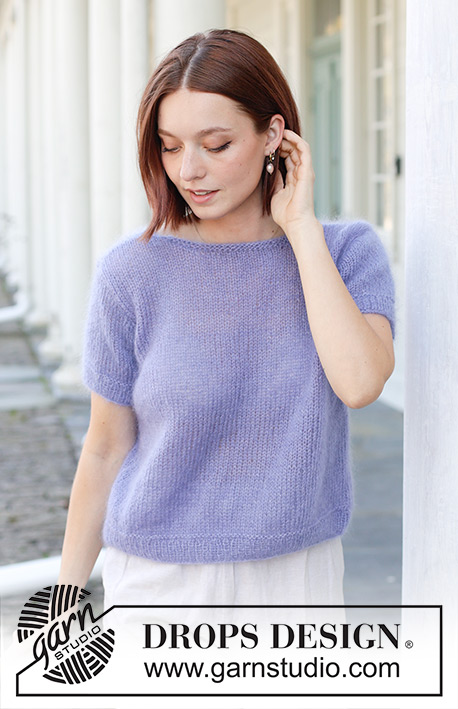 |
Knitted jumper in 2 strands DROPS Kid-Silk. Piece is knitted bottom up, in stocking stitch with short sewn-in sleeves. Size XS – XXXL.
DROPS 259-3 |
|
|
---------------------------------------------------------- EXPLANATION FOR THE PATTERN: ---------------------------------------------------------- GARTER STITCH (when working in the round): Alternately knit 1 round and purl 1 round. 1 ridge vertically = 2 rounds. DECREASE TIP (evenly): To calculate how to decrease evenly, use the total number of stitches on row (e.g. 164 stitches) and divide stitches by number of decreases to be done (e.g. 16) = 10.3. In this example decrease by knitting approx. every 9th and 10th stitch together. INCREASE TIP: Increase 1 stitch on each side of marker thread as follows: Work until 1 stitch remains before marker thread, make 1 yarn over, knit 2 (marker thread is between these 2 stitches), make 1 yarn over. On next round knit yarn overs twisted to avoid holes. Then work the new stitches in stocking stitch. ---------------------------------------------------------- START THE PIECE HERE: ---------------------------------------------------------- JUMPER - SHORT OVERVIEW OF THE PIECE: In this pattern needles of different length have been used, begin with fitting length for number of stitches and switch as needed. Piece is worked in the round on circular needle, from the bottom and up to armholes. Then divide the piece for front piece and back piece, and finish each part separately back and forth. Work sleeves bottom up, and work in the round on needle until armhole, then work sleeve back and forth on row. Sew parts together. Finish by picking up stitches around the neck and work a neck edge in the round. If 0 is given for the chosen size, it means that you skip the information until next information. BODY: Cast on 166-184-198-214-232-246 stitches on circular needle size 4 mm with 2 strands DROPS Kid-Silk. Work rib (= knit 1/purl 1) for 3-3-3-4-4-4 cm. Work 1 ridge in GARTER STITCH - read explanation above. Switch to circular needle size 5 mm and work in the round in stocking stitch while AT THE SAME TIME on 1st round decreasing 18-20-22-22-24-26 stitches evenly - read DECREASE TIP = 148-164-176-192-208-220 stitches. Insert a marker thread at beginning of round and a marker thread after 74-82-88-96-104-110 stitches (= in the sides), move the marker thread when working. Remember to follow the knitting tension! Work until piece measures 32-33-34-35-36-37 cm. Now divide the piece for front piece and back piece. DIVIDING FOR ARMHOLES: At the same time on next round divide piece for front piece and back piece as follows: Cast off the first 3-3-3-3-3-3 stitches at the beginning of round for armhole, work the next 68-76-82-90-98-104 stitches, cast off the next 6-6-6-6-6-6 stitches for armhole, work the next 68-76-82-90-98-104 stitches, cast off the last 3-3-3-3-3-3 stitches for armhole. Cut the yarn. Now work front piece and back piece back and forth on needle until finished measurements. BACK PIECE: = 68-76-82-90-98-104 stitches. Continue back and forth in stocking stitch as before. In each side cast off stitches for armholes on every other row as follows: Cast off 3 stitches 0-0-0-1-1-1 time in each side, 2 stitches 1-2-2-3-4-5 times in each side, and 1 stitch 2-3-6-4-5-4 times in each side = 60-62-62-64-66-70 stitches remain. When piece measures 48-50-52-54-56-58 cm, cast off the middle 22-24-24-26-28-28 stitches for neck, and finish each shoulder separately. SHOULDER: Now cast off 1 stitch for neck on next row from the neck = 18-18-18-18-18-20 stitches remain on each shoulder. Cast off when piece measures 50-52-54-56-58-60 cm. FRONT PIECE: = 68-76-82-90-98-104 stitches. Continue back and forth in stocking stitch as before. In each side cast off stitches for armholes on every other row as follows: Cast off 3 stitches 0-0-0-1-1-1 time in each side, 2 stitches 1-2-2-3-4-5 times in each side, and 1 stitch 2-3-6-4-5-4 times in each side = 60-62-62-64-66-70 stitches remain. When piece measures 46-48-49-50-51-52 cm, slip the middle 16-18-18-18-20-20 stitches on a thread for neck, and finish each shoulder separately. SHOULDER: Now cast off stitches for neck on every other row as follows: Cast off 2 stitches 1 time and 1 stitch 2-2-2-3-3-3 times = 18-18-18-18-18-20 stitches remain on each shoulder. Cast off when piece measures 50-52-54-56-58-60 cm. SLEEVES: Work sleeve in the round on needle, then finish sleeve cap back and forth on needle. Cast on 52-56-62-68-74-82 stitches on double pointed needles size 4 mm. Work in the round in rib (= knit 1/purl 1) until rib measures 3-3-3-4-4-4 cm. Work 1 ridge. On next round switch to double pointed needles size 5 mm and knit 1 round while AT THE SAME TIME decreasing 6-6-8-8-8-10 stitches evenly on round - remember DECREASE TIP = 46-50-54-60-66-72 stitches. Insert 1 marker thread mid under sleeve, this is used when increasing stitches under sleeve. Move marker thread upwards when working. Work in stocking stitch in the round. When sleeve measures 4-4-4-5-5-5 cm, increase stitches mid under sleeve – read INCREASE TIP and increase as follows: Increase 2 stitches every 1½-2-2-2-2-1 cm 4-3-3-2-2-1 times in total = 54-56-60-64-70-74 stitches. Work in stocking stitch until sleeve measures 10-10-10-9-8-7 cm. Now work sleeve cap as explained below. SLEEVE CAP: On next round cast off 6 stitches mid under sleeve but to avoid cutting the yarn at begin cast-off 3 stitches before marker thread mid under sleeve, cast off and then work as before the rest of row. Then work back and forth on needle in stocking stitch while AT THE SAME TIME casting off for sleeve cap in each side, cast off at the beginning of row as follows: Cast off 2 stitches 2-2-2-3-3-3 times in each side, 1 stitch 4-5-7-5-7-8 times in each side, 2 stitches 2-2-2-3-3-3 times in each side and 3 stitches 1-1-1-1-1-1 times in each side = 18-18-18-18-20-22 stitches remain. Cast off the remaining stitches. Sleeve measures approx. 19-20-21-21-22-22 cm. ASSEMBLY: Sew the shoulder seams. Sew sleeve in armhole. NECK EDGE: Use circular needle size 4 mm and 2 strand DROPS Kid-Silk (= 2 strands), pick up stitches around the neck from right side as follows: Begin at one shoulder seam and pick up approx. 60-64-66-72-82-84 stitches (including stitches on thread mid front). Switch to circular needle size 5 mm and work 2 ridges. Loosely cast off. |
|
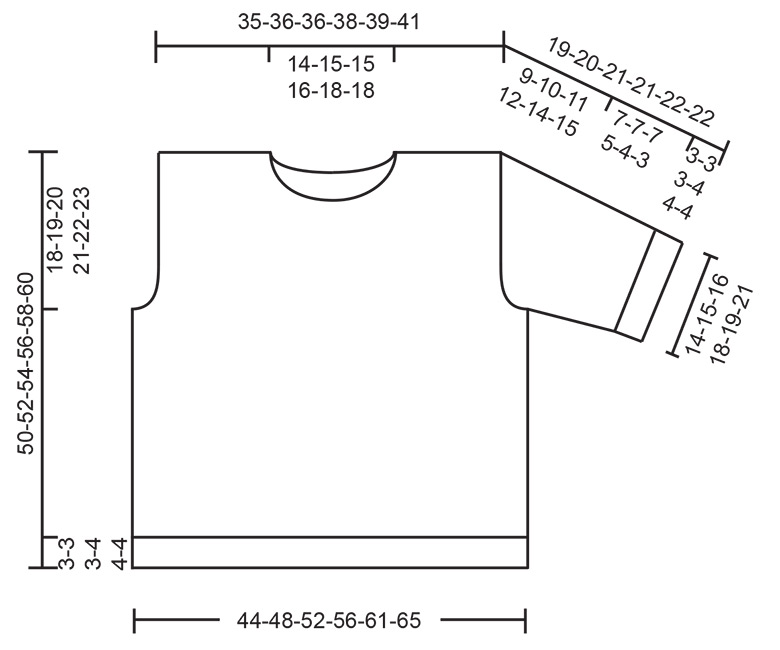 |
|
Have you finished this pattern?Tag your pictures with #dropspattern #violetreveriesweater or submit them to the #dropsfan gallery. Do you need help with this pattern?You'll find 30 tutorial videos, a Comments/Questions area and more by visiting the pattern on garnstudio.com. © 1982-2025 DROPS Design A/S. We reserve all rights. This document, including all its sub-sections, has copyrights. Read more about what you can do with our patterns at the bottom of each pattern on our site. |
|







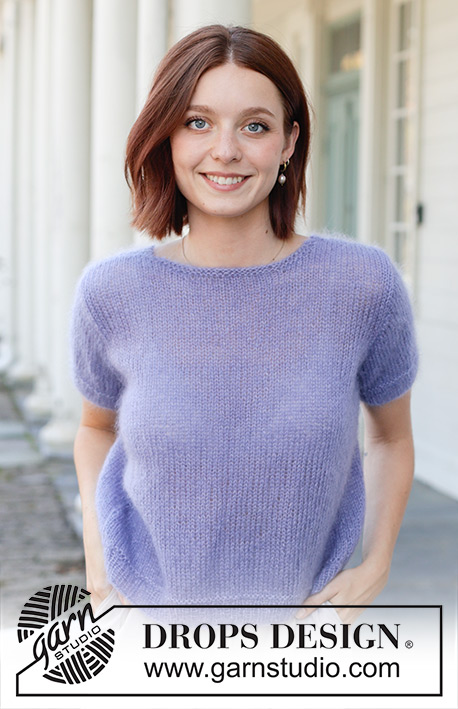
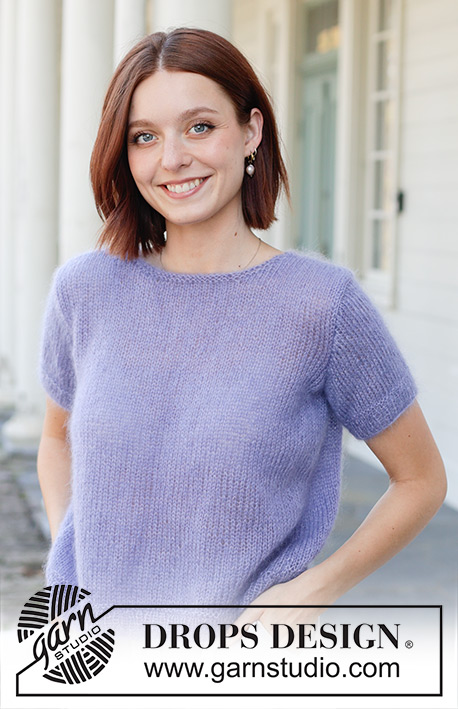
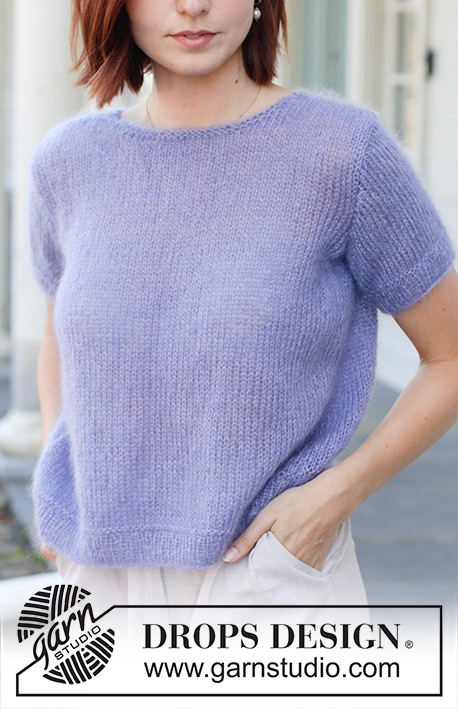

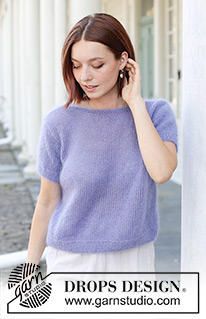
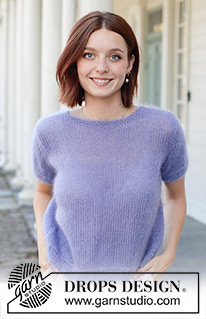
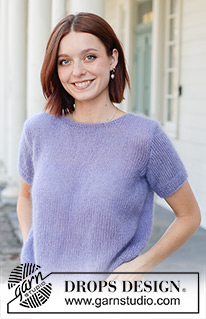
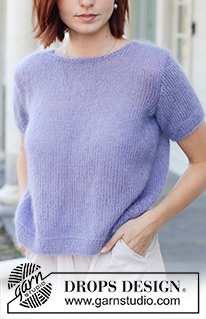

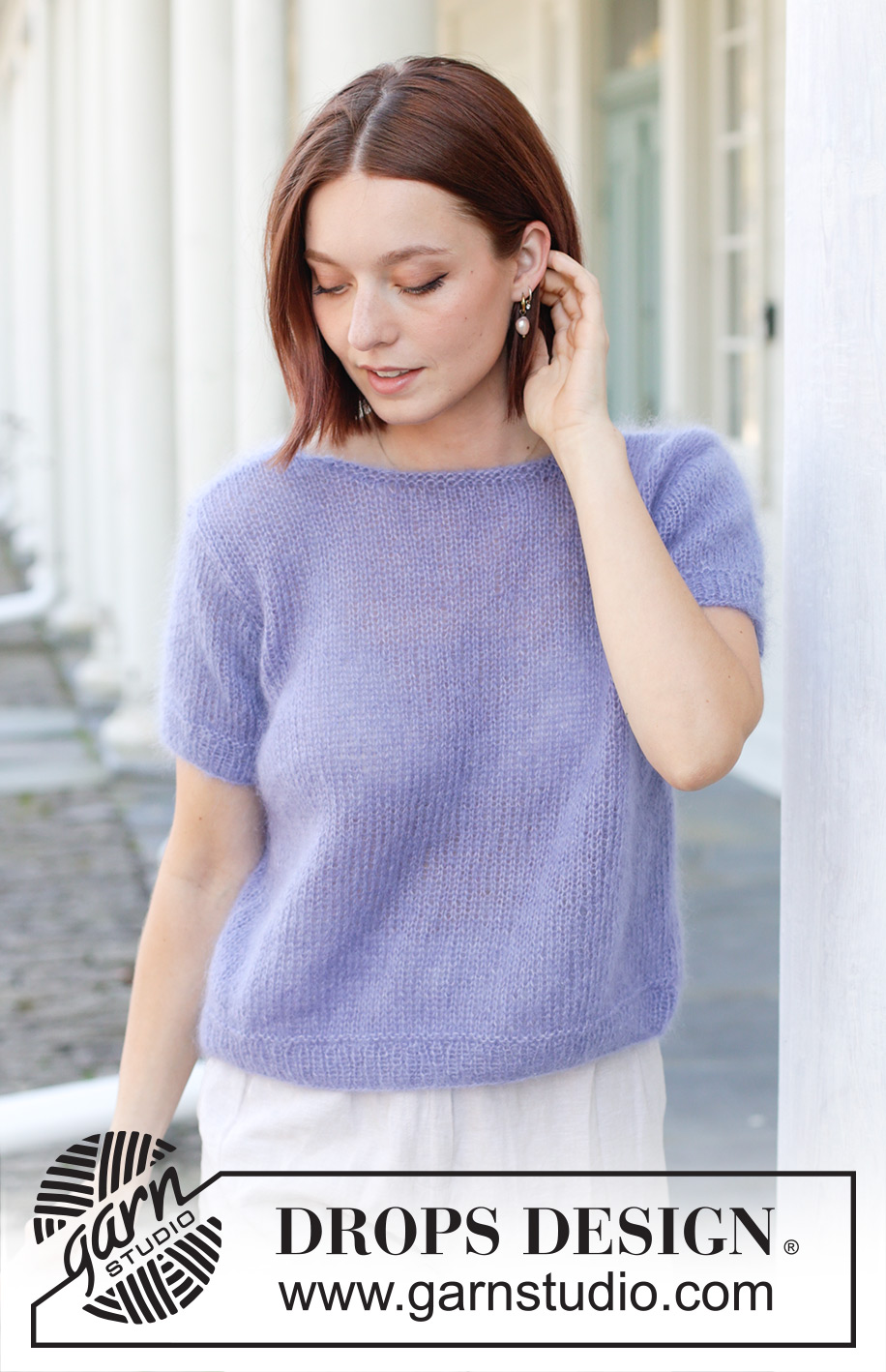
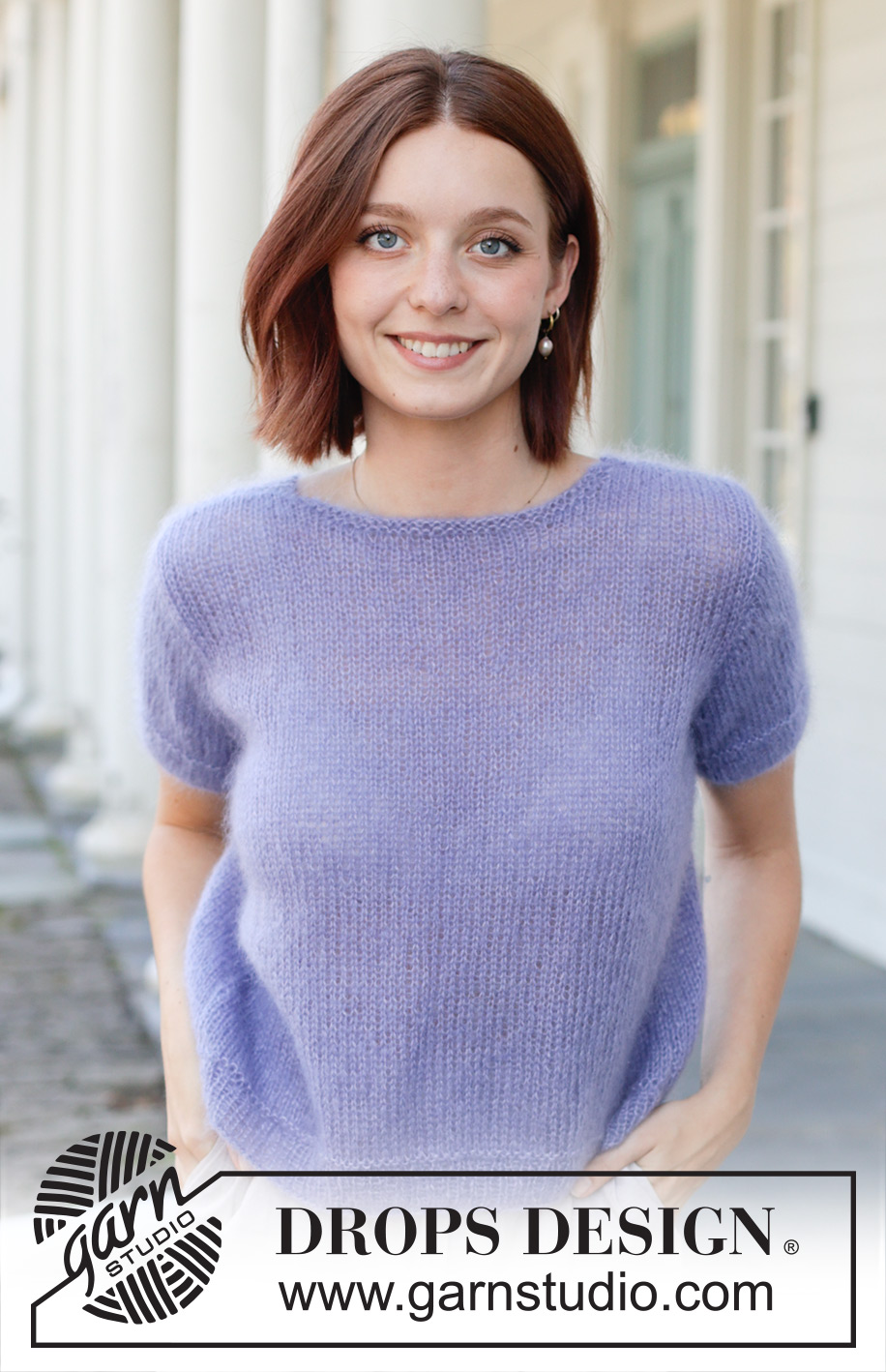
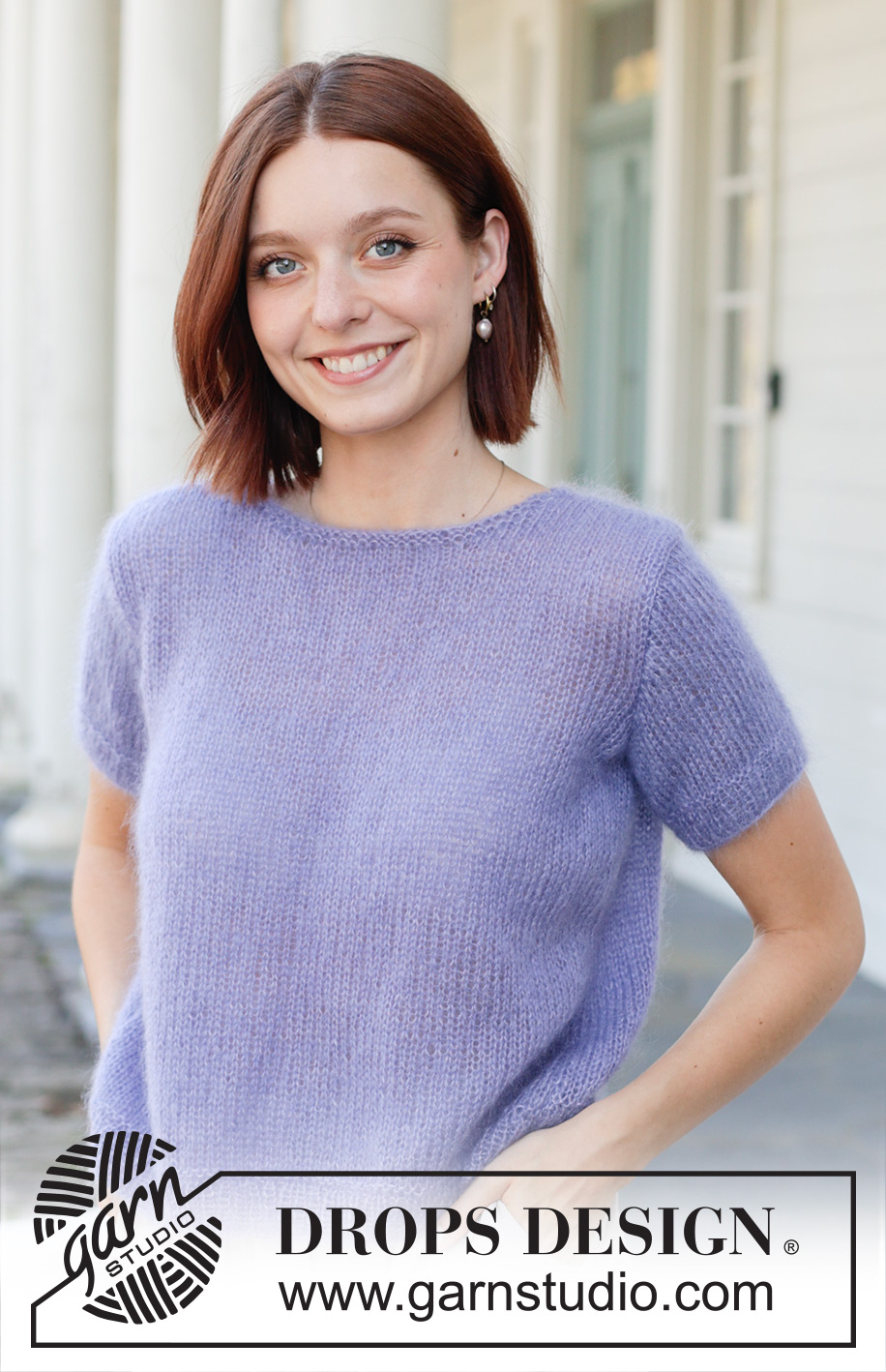
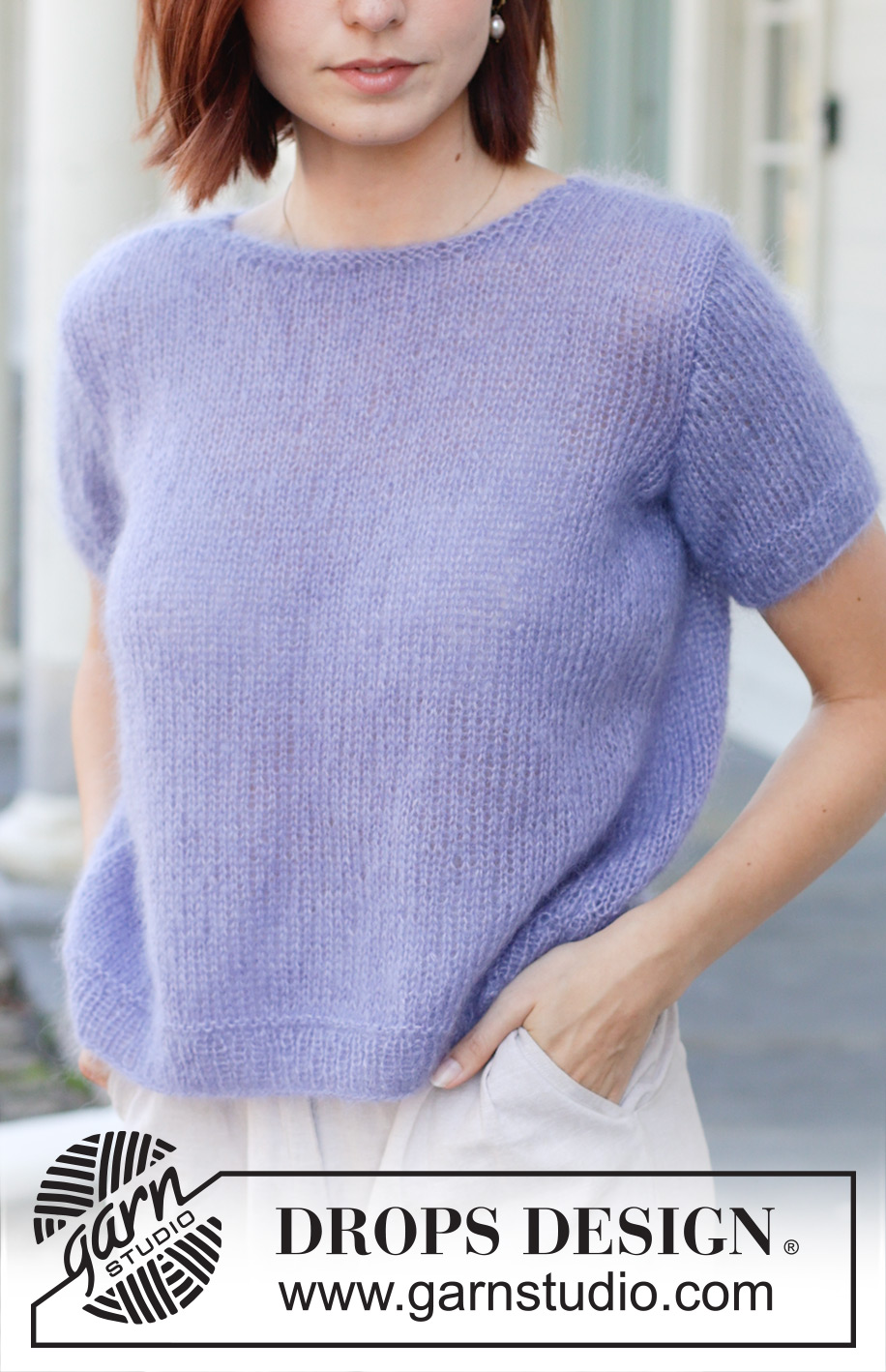

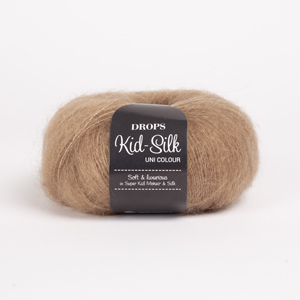

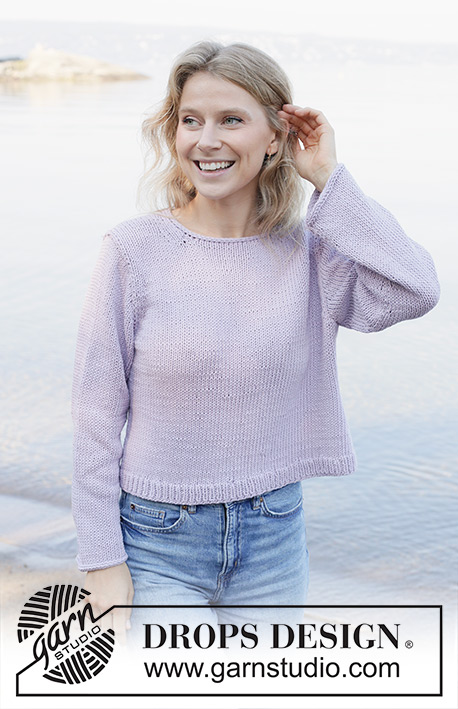
















































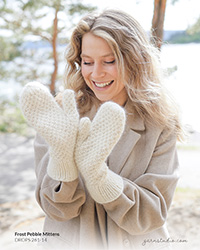


Post a comment to pattern DROPS 259-3
We would love to hear what you have to say about this pattern!
If you want to leave a question, please make sure you select the correct category in the form below, to speed up the answering process. Required fields are marked *.